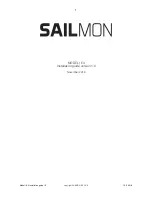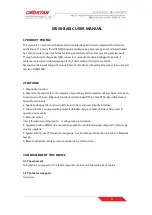
In Detail
P6015A Instruction Manual
1–21
Other Considerations
Component heating caused by changes in ambient temperature or
high voltage will cause a slight change in calibration accuracy.
With high-frequency signals, such as fast transients, ringing may
occur which will distort the actual waveform. This ringing is due to
resonance occurring between the capacitance of the probe and the
ground lead inductance.
Problems Encountered Using the Probe
If you experience problems making measurements with the probe,
consider the following remedies:
H
Check low frequency compensation and adjust as necessary.
H
If you have the probe connected to an oscilloscope, check the
front panel controls of the oscilloscope to verify that the signal is
displayed properly.
H
Use a ground lead.
H
Don’t use ground leads that are too long (causing ringing).
H
Because of probe characteristics, small differences in input
capacitance between oscilloscopes and scope channels can affect
the voltage measurement. The probe compensation should be
checked each time the probe is connected to a different input
channel or to a different oscilloscope.
Summary of Contents for P6015A
Page 4: ......
Page 12: ...Service Safety Summary viii P6015A Instruction Manual...
Page 14: ...Service Safety Summary x P6015A Instruction Manual...
Page 15: ...User Information...
Page 16: ......
Page 18: ...Overview 1 2 P6015A Instruction Manual Guard Ring Figure 1 1 The P6015A High Voltage Probe...
Page 38: ...In Detail 1 22 P6015A Instruction Manual...
Page 46: ......
Page 47: ...Service Information...
Page 48: ......
Page 50: ...Performance Verification 2 2 P6015A Instruction Manual...
Page 73: ...Index...
Page 74: ......
















































